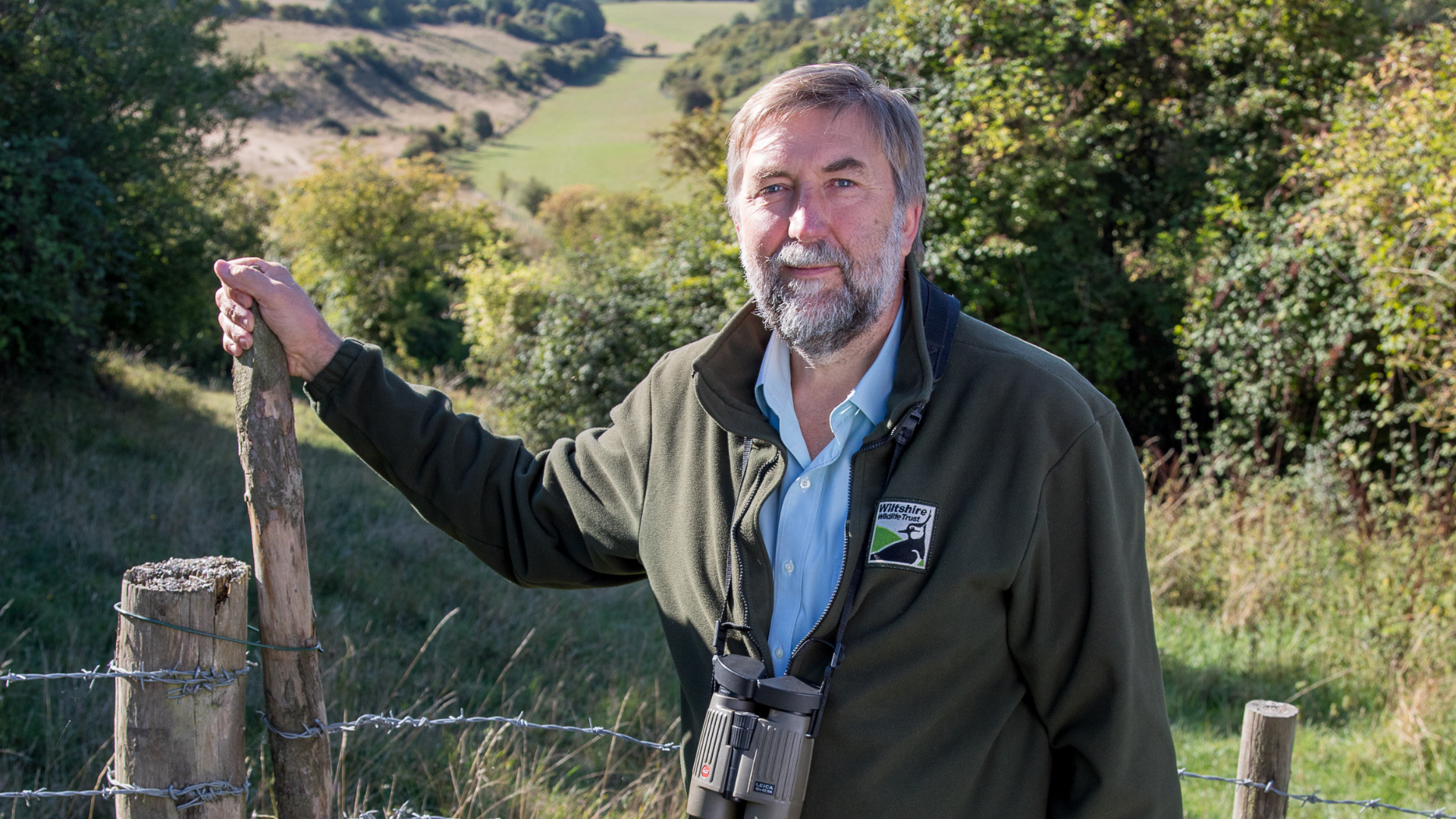
5 minute read
Reflecting on 33 years at the helm
By Dr Gary Mantle MBE, Chief Executive
After 33 years of dedicated service to the wildlife and people of Wiltshire, our Chief Executive Dr Gary Mantle MBE is retiring this summer. Over three decades, Gary has made a huge contribution to conservation, locally, nationally and internationally. We asked Gary to tell us about some of the Trust’s key moments during his time at the helm…
Advertisement
1990
We launched a big ‘Water Campaign’ to raise concerns over the impact of groundwater abstraction on chalk streams. We set up a volunteer network of river monitors and a national water team who initiated action on invasive non-native species, surveyed rivers and built otter holts. Once extinct, otters are now found all across the county, and in just the past eight years, the Trust’s water team has enhanced over 40km of Wiltshire’s rivers.
1992
Opening up the world of nature and inspiring the next generation to care for the environment has always been a priority for the Trust. In 1992, the Trust appointed its first paid education officer. Since then, we have worked with tens of thousands of young people and now employ 67 full-and part-time staff across our education and wellbeing teams.
1994
Following the 1992 UN conference in Rio, where world leaders first agreed on actions to tackle the biodiversity and climate crises, the Trust initiated a programme of local action under the Local Agenda 21 initiative. This resulted in a more holistic people-based approach to tackling environmental problems; working with schools, community groups and concerned individuals to tackle waste reduction and recycling, encourage greater energy efficiency and wildlife gardening.
1996
The Trust was the first organisation to benefit from the new Landfill Tax Community Fund thanks to the support of The Hills Group, and the first Wildlife Trust to secure a grant from the new Heritage Lottery Fund. This funding has enabled us to create habitats, engage communities, extend existing reserves and purchase exceptional sites such as Clattinger Farm, the finest example of a lowland hay meadow in Britain.
2000
Visiting the Czech Republic to give a talk, I was astonished by the scale and success of grassland restoration there. A few years later, I returned with leaders of the other Wildlife Trusts. The movement-wide approach to nature conservation changed from preservation of protected sites to ecological restoration at a landscape scale. We pioneered ‘Rebuilding Biodiversity’, which became adopted nationally as the ‘Living Landscapes’ approach, seeking bigger, better managed, buffered and better connected areas for nature.
2005
During the official opening of Blakehill nature reserve, a former military base, we talked about the need for precision grazing at its new farm yard, to protect and maintain our wildflower meadow nature reserves and deliver the biggest grassland restoration project in Britain at Blakehill.
We now have three successful farming bases, which are now an essential part of reserve management.
2009
I represented The Wildlife Trusts in meetings with the UK Prime Minister in preparation for the UN Climate Change conference in Copenhagen (COP15). I hand delivered a giant ‘postcard’ with over 200 signatures urging the UK delegation to press for urgent action. In 2013, the Trust set up Wiltshire Wildlife Community Energy. WWCE now generates over 6MW from solar panels.
2012
Since its purchase in 2001, we have expanded and made major enhancements to Langford Lakes nature reserve to allow wildlife to flourish. It is now a premier bird watching site and our restoration of the River Wylye has encouraged spawning salmon, grayling and brown trout.
In 2012, a reed bed was built there by Wessex Water to prevent untreated sewage being pumped into the river when drains became overwhelmed, becoming a template for similar nature-based solutions.
2015
The purchase of Lower Moor Farm gave us the opportunity to set up our first Care Farm. Lakeside Care Farm provides nature-based opportunities for young people with a range of complex needs. The child-centred approach of activities in nature has had a profound impact and the messages of gratitude from families and carers are incredible. We have since opened The Willows Care Farm at Mill Farm, near Melksham, and we plan to set up a third in south Wiltshire.
2018
Reports showing huge declines in insect abundance and diversity spurred us into launching a national Action for Insects campaign, which has led to nearly every Wildlife Trust taking urgent, practical action. Here in Wiltshire, we have carried out surveys, adjusted how we manage our reserves, and created butterfly banks, log stacks and wider woodland rides.

Pearl-bordered fritillary
Gary Mantle










